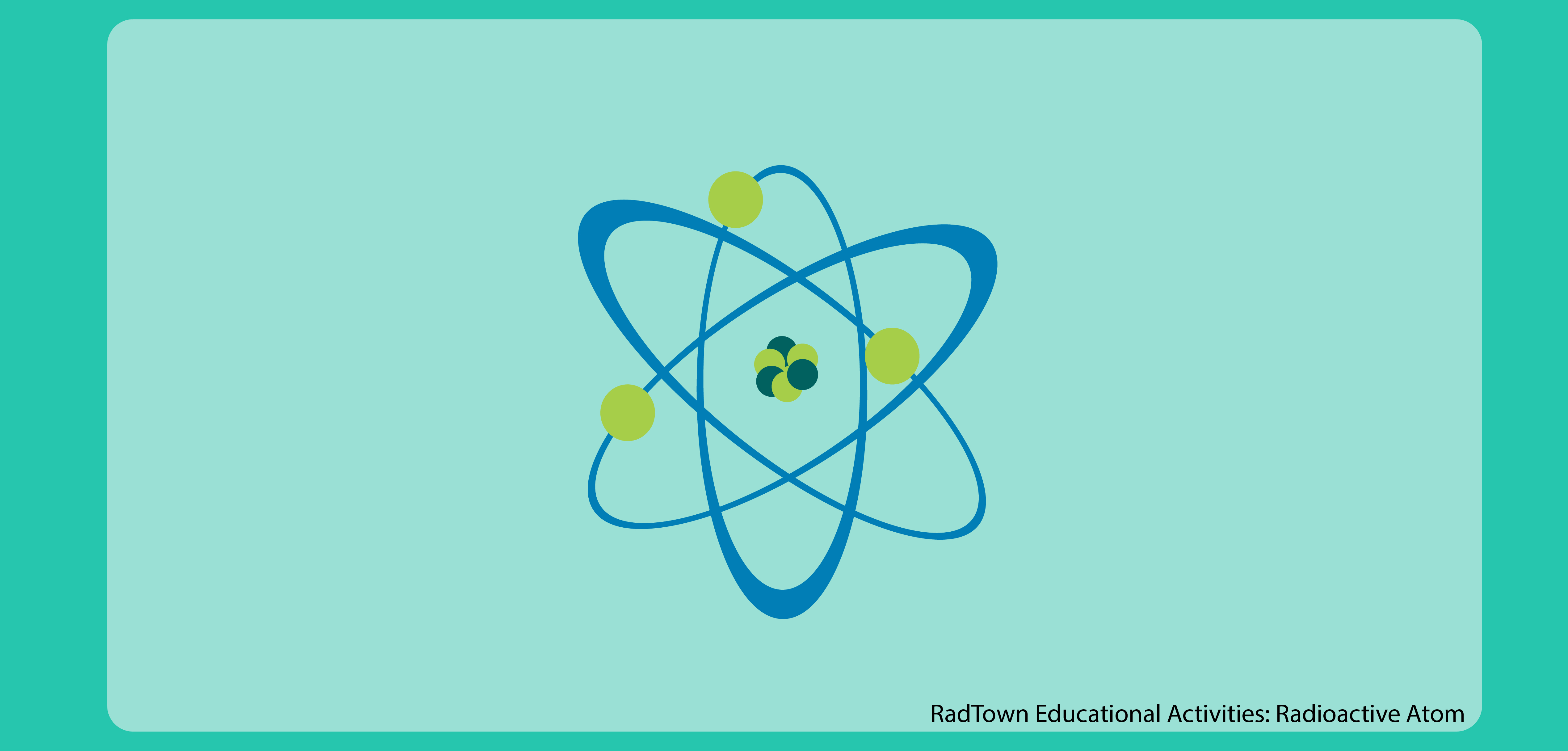RadTown Radioactive Atom Activity 4: Atomic Stability
Radiation is emitted from atoms when an unstable atom decays to become more stable. When an atom has extra neutrons or protons, it causes the element to become unstable. This activity helps students understand how emitting an alpha or beta particle changes the structure of an atom. This activity is intended for middle and high school students.
- Objectives
- Next Generation Science Standards
- Materials and Resources
- Time
- Directions
- Common Core State Standards
- Printable Worksheets and Classroom Aids
Objectives
Students will learn what happens as atoms attempt to reach stability.
NOTE: Students should have a base knowledge in determining atomic structure (e.g., the atomic mass and atomic number of an atom based on the number of nucleons).
Next Generation Science Standards
The concepts in this activity can be used to support the following science standard:
- PS1. Structure and Properties of Matter
Materials and Resources
Each italicized document title can be found at the bottom of this page, and is available for printing and distribution.
- The Radioactive Atom: Teacher Background Information
- Vocabulary Materials
- Atomic Stability Worksheet (one per student, pair or group) and Atomic Stability: Teacher Answer Key
- At least 21 objects per group (e.g., candy or small pieces of paper)
- 10 objects should be the same color or marked with a plus (+) symbol to indicate they are protons
- 10 objects will represent neutrons with no electrical charge
- 1 object should be a different color or marked with a minus (-) symbol to indicate it is an electron
- Student computers with Internet access (optional):
Time
45-60 minutes, not including optional activities or extensions.
Vocabulary
- Alpha particles
- Atom
- Beta particles
- Electron
- Ionizing radiation
- Neutron
- Nucleus
- Proton
- Radiation
- Radioactive atom
- Radioactive decay
Directions
- Start with a vocabulary activity if students are not familiar with radiation and the terms used in this activity, or provide students with the terms and definitions.
- Ask students to hypothesize:
- Why some elements are radioactive (unstable). When the atoms of an element have extra neutrons or protons it creates extra energy in the nucleus and causes the atom to become unbalanced or unstable.
- Whether radioactive elements can become stable and if so, how. The unstable nucleus of radioactive atoms emit radiation. When this occurs, a new atom and element are formed. This process is called radioactive decay. It continues until the forces in the unstable nucleus are balanced.
NOTE: Images and videos demonstrating radioactive decay and alpha and beta emissions are available online if you would like to share them with students.
- Distribute the Atomic Stability Worksheet and objects that represent protons, neutrons and an electron.
- Explain that the focus of this activity will be on two types of radiation, alpha particles and beta particles, and how the release of alpha and beta particles changes the structure of the atom or nucleus. Pretend elements will be used in the activity to keep the number of nucleons small and manageable. Generally, the atoms of radioactive elements have a large number of nucleons.
- Guide students through the activity or perform the activity as a class if needed. Students should see that the emission of an alpha particle reduces the number of protons and neutrons by two. With the emission of a beta particle, the number of protons increases by one and the number of neutrons decreases by one.
- Conclude by having students share what they learned about radioactive atoms the emission of alpha and beta particles.
- Optional activity or extension: Ask students to:
- Examine the properties, uses and health effects of alpha- and beta-emitters.
- Resources include:
- Radiation Basics, Types of Ionizing Radiation
- Radioactive Decay
- Examine radioactive decay chains and determine whether each step was the result of an alpha or beta emission. See Activity 6: Radioactive Decay Chain.
The concepts in the Atomic Stability activity align with the following:
CCSS Language Arts Standards for Literacy in History/Social Studies, Science, & Technical Subjects:
- CSSS.ELA-Literacy.SL.6-12.1 Comprehension and Collaboration
- CSSS.ELA-Literacy.SL.6-12.5 Presentation of Knowledge and Ideas
- CSSS.ELA-Literacy.RST.6-12.7 Integration of Knowledge and Ideas
- CSSS.ELA-Literacy.WHST.6-12.1 Text Types and Purposes
CCSS Mathematics Standards:
- CCSS.MATH.PRACTICE.MP1
- CCSS.MATH.PRACTICE.MP2

